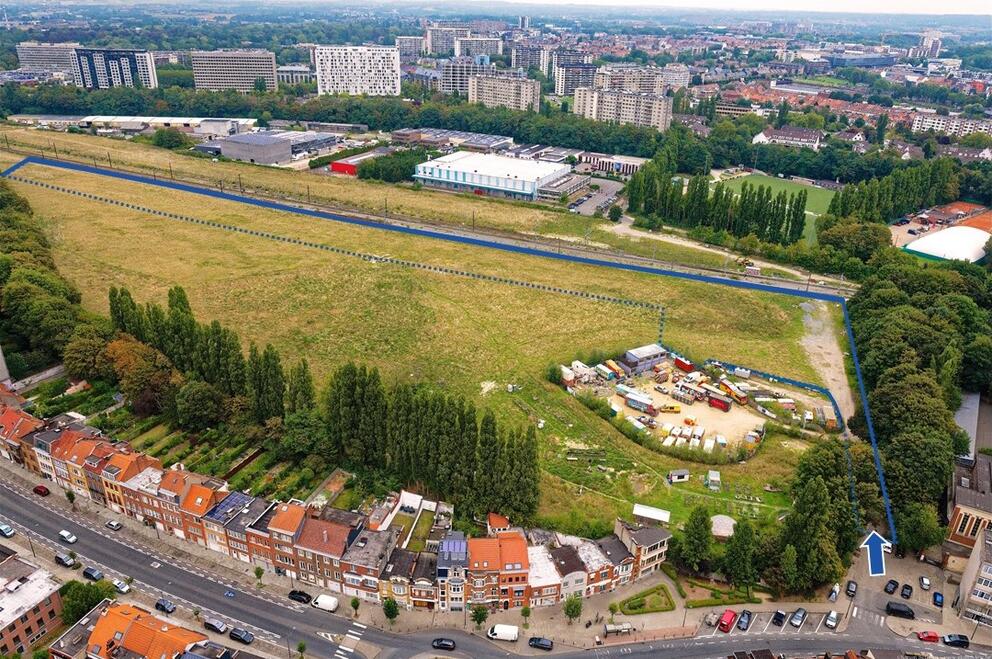SAU makes preparations for ‘Summer at Josaphat’
In its Restart and Redeployment Plan presented on Tuesday 7 July, one of the measures announced by the Government of the Brussels-Capital Region was the ‘activation of temporary occupation programmes on the strategic sites of the Urban Development Corporation (SAU)’, with priority being accorded to the Josaphat site. The SAU is therefore making active preparations to open a temporary park on the site of the former Josaphat marshalling yard. This new temporary occupation programme will be very different from those previously implemented by the SAU, in view of the specific nature of this site.
***
Minister-President Rudi Vervoort explains that ‘The period of lockdown from which we are emerging has reinforced the Brussels Region’s desire to create more areas in the public space where people can enjoy some time outside and socialise, and in particular to give people access to more green spaces. Amenities of this type are planned for eventual inclusion in the major urban projects under development: Josaphat, Usquare.brussels, mediapark.brussels and so on. In its Restart and Redeployment Plan, the Government has instructed the SAU to activate a number of temporary occupation programmes on its strategic sites, without waiting for their complete development. The SAU will therefore make preparations to open a temporary park on the site of the former Josaphat marshalling yard as early as this summer. This will constitute a “natural” complement to the nearby Josaphat Park which has been intensively used by the population of the neighbouring districts since the lockdown.’
A foretaste of the long-term project
This temporary park is located on the site of the future active linear park featured in the Josaphat project, and has the same basic outline.
Gilles Delforge, the director of the SAU, notes that ‘It is still too early to be able to detail everything that will happen in the future park. The main idea of “Summer at Josaphat” is to give the people of Schaerbeek, Evere and the whole of Brussels a chance to discover the site, go for a walk there and do the kind of things you do on a fine summer’s day with your family or friends of all ages in a park: have a picnic, enjoy the sunshine, play games, discover nature and so on. Cultural activities will not be forgotten either. The temporary park will also be used to give municipalities, non-profit organisations and schools access to a new venue for ‘green’ activities during the holidays and at the start of the new school year, as the park should open at the beginning of August and stay open until the end of October. Opening in early August is a challenge. The SAU will achieve this through the working relationship it is currently setting up with a large number of public-sector and voluntary partners at both regional and municipal level. The idea of course is to involve the organisations and groups that are already present on the site. The municipalities of Schaerbeek and Evere have responded very positively to the initiative. "Summer at Josaphat" represents an operational challenge that the Government has set us, but it's what we're here to do. We’re going to secure a relatively large space by installing fences to ensure that visitors are kept safe from the railway lines and protect a large area of wasteland that will be kept out of bounds.’
The SAU will make some minor adaptations to create the park and organise a security guard service, including night-time surveillance, for the peace of mind of local residents. The adaptations will of course comply with the rules on temporary installations exempt from planning permission, and be carried out in conjunction with Brussels Environment.
‘We will communicate about the activities and practical details as soon as possible,’ concludes Gilles Delforge. ‘”Summer at Josaphat” will be different from the temporary occupation programmes already implemented by the SAU on other sites (See U on the Usquare.brussels site and MolenWest at the Gare de l’Ouest railway station), in view of the site’s character. But the essential point is the same: to use the land holdings of the Region and the SAU to contribute to the development of social cohesion in the areas where the land is located.’

